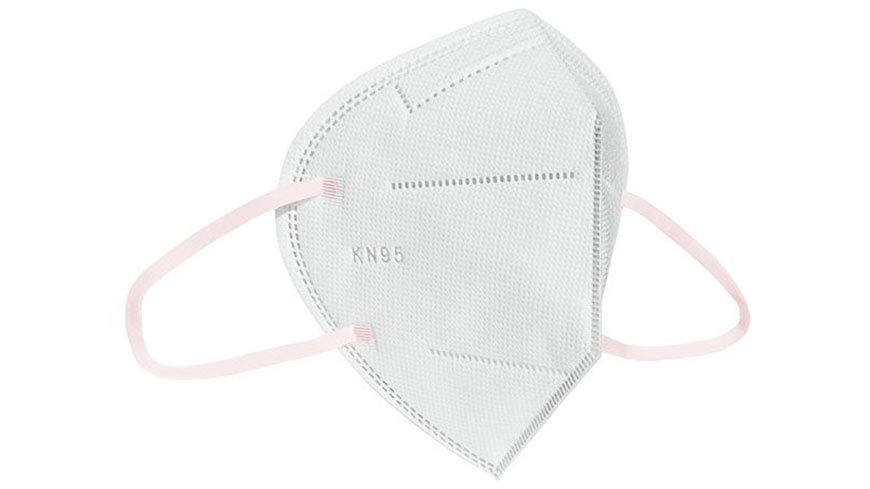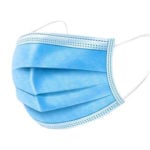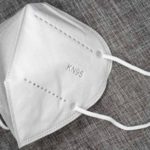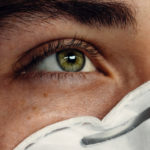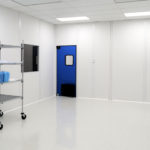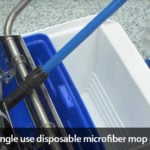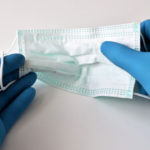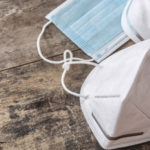Table of Contents
What are the differences between 3M N95 masks and KN95 masks? How do KN95 masks compare to 3M-N95 masks?
What is a KN95 Mask?
KN95 masks are considered similar in filtration capabilities to N95 technology. However, one of the major differences is that most KN95 masks feature ear loops instead of head band protection.
Sometimes, ear loop designs are more desirable for less critical use, while only surgical grade N95 masks would be FDA approved for sterile medical procedures.
In the case of a pandemic, the ear loop design is desirable for quick donning and doffing (taking off and putting back on). However, in medical arenas where users are likely exposed to high levels of viral load, a tighter fit with less leakage is most beneficial.
Read: Where Can I Buy FDA Approved KN95 Masks?
Why Do KN95 Have Ear Loops Instead of Headbands?
Comfort and ease are the primary reason that KN95s frequently have ear loops instead of a headband design.
Pros and Cons of Ear Loop Facemask Designs
The ear loop design has significant advantages in more casual settings, as the ear loops are more comfortable, more durable, and easier to donn when wearing headgear, hats, or PPE such as helmets.
Pros and Cons of Headband Face Masks Designs
Headband designs maintain a more snug fit for the masks and prevent leakage, but will break when overstretched and are challenging to put on and take off for those with thick hair or certain hair styles.
The direct advantage of the headband straps is that the mask fits and forms closer to the face, thus less unfiltered air can enter from any gaps or seams around the edges of the mask.
Read: Medical and Civilian Face Masks: What’s the Difference?
3M N95 Masks
3M N95 masks are produced by 3M and select private label manufacturers. N95 masks are considered a gold standard for healthcare workers on the front lines, as the microporous material is able to filter 95% of particles at 0.3 micron. N95 mask materials have multiple grades, such as those rated sterile for surgical procedures, and also those rated for general purpose particulate filtration.
SARS-COVID-2 Virus Size
Viruses are small, some smaller than 0.1 micron. As noted above, if a mask only filters items as small as 0.3 micron, how does it filter viruses like SARS-COVID-2 as small as 0.1 micron?
As far as Viruses go, SARS-COVID-2 has a rather large envelope for viruses at 50 – 200 nm (0.05 – 0.2 micron). Each virus may have 1030 virions (virus particles). Exposure to a virus does not mean the virus will infect the host. The “viral load” is something that can measure the amount of virus present in a person by swabbing and testing their saliva or nasopharyngeal specimens.
Read: How Virus Droplet Size Affects Filtration and Infection Rates
Studies aim to better understand exactly “how much” virus material is required before a host becomes exposed. While the connection between severity of the virus and “viral load” found within the host appears inconclusive, data indicates that patients with higher initial viral loads were more likely to die and experience severe symptoms. The study below also finds that older age groups were associated with higher peak loads.
“Studies for SARS-CoV have shown that a high initial viral load was associated with death. However, our study only showed that the median viral load was 110 higher in severe cases than in mild cases, and the difference was not significant. But, older age was associated with a higher peak viral load.” –
There are many factors which determine the intensity, onset, and likeness of complications of various diseases or infections.
Contagious spread is most likely in environments with high viral loads where static, unfiltered air is shared between passing hosts. In previous articles, studies argue that those not wearing masks were twice as likely to become infected by airborne virus particles. Meanwhile, an N95 mask could be up to 13X as effective as standard cloth masks in reducing infection and transmission rates.
Read: Why 3 Ply Face Masks and Surgical Masks are Meaningful N95 Mask Alternatives
N95 masks are rated for 95% capture of 0.3 micron particles. There are a number of mechanical and even electrostatic principles which will capture particles even smaller and prevent droplet-based virus particles from entering the lungs. Specifically, particles transmitted from person to person through the air.
The most important job of a face mask or face covering during a viral outbreak is to prevent infected individuals from further spreading germs from person-to-person.
“This respirator can help reduce inhalation exposures to certain airborne biological particles (e.g. mold, Bacillus anthracis, Mycobacterium tuberculosis, etc.) but cannot eliminate the risk of contracting infection, illness or disease. OSHA and other government agencies have not established safe exposure limits for these contaminants.”
3M
FDA and HHS Face Mask Guidance
Masks for non-medical purposes are not medical devices and are not regulated by the FDA. For example, the term “surgical mask” is reserved for products designed and FDA approved for medical purposes.
Masks for medical purposes are regulated by the FDA. In the past months, the FDA has issued multiple updates on its approval of imported KN95 masks.
Read: NIOSH-Approved N95 Particulate Filtering Facepiece Respirators
Emergency Use Authorization for Face Masks
“The Emergency Use Authorization (EUA) authority allows FDA to help strengthen the nation’s public health protections against CBRN threats by facilitating the availability and use of MCMs needed during public health emergencies.”
FDA, May 29th, 2020
On February 4, 2020, per U.S.C. §360bbb-3(b)(1)(C)), the Secretary of the HHS determined Coronavirus Disease 2019 (COVID-19 to be a public health emergency that could affect national security or the health and security of United States citizens living abroad.
On March 2, 2020, circumstances justified the emergency authorization of personal respiratory protective devices during the COVID19) outbreak, subject to previous terms issues in Section.1
On March 24, 2020, the FDA issued an Emergency Use Authorization (EUA) for importing non-NIOSH-approved N95 respirators. Under this EUA, among other criteria, the FDA accepts marketing authorization from Australia, Brazil, Europe, Japan, Korea, and Mexico who have similar standards to NIOSH. The FDA did not list KN95 respirators in this EUA because of concerns about fraudulent products listed as KN95s.
April 3, 2020: The FDA posted an FAQ answering whether respirators approved under standards used in other countries, such as KN95s, can be used in the US during the COVID-19 pandemic. The short answer is yes. In response to continued respirator shortages, the FDA also issued a new Emergency Use Authorization (EUA) for non-NIOSH-approved respirators made in China, which makes KN95 respirators eligible for authorization if certain criteria are met, including evidence demonstrating that the respirator is authentic.
On May 7, 2020, FDA revised and reissued the April 3, 2020 EUA based generally on concerns raised about the authenticity of certain respirators authorized under the third criterion of the April 3, 2020 EUA. For example, data from NIOSH testing on some respirators that were listed in Appendix A showed that the respirators failed to meet the expected filtration performance efficiency.
“This EUA does not affect the previous March 28, 2020, EUA for Non-NIOSH-Approved Imported FFRs (originally issued on March 24, 2020), which authorizes, in part, the emergency use of certain imported disposable FFRs that are not NIOSH-approved and excluded those manufactured in China…..”
The statement goes on to say, “FDA is re-issuing this EUA with certain revisions to authorize disposable respirators manufactured in China that meet certain criteria, including criteria concerning additional validation and review by FDA to confirm the respirator’s authenticity.”
Use of KN95 Masks for Healthcare Professionals – Is it Acceptable?
According to Oregon.gov, Michael Wood, administrator for Oregon OSHA states, “In such cases, medical personnel should only use KN95 respirators that are on the FDA’s approved list.”
KN95s can continue to be used as face coverings (similarly to the use of cloth, paper and disposable face coverings), but KN95s should not be used as respirators for healthcare professionals.
Read: Strategies for Optimizing the Supply of N95 Respirators
KN95 Manufacturing Quality
There have been a number of issues related to manufacturing quality of KN95 and 3M N95 masks. Particularly, abusive practices such as counterfeiting, price gouging, false labeling, and unsubstantiated or non-applicable claims.
Mask Testing
The NIOSH has gone as far as testing masks from various manufacturers. Find the results here.
69% of the masks tested by the NIOSH in fact performed within claimed testing standards. 79% of samples fell within 10% of claimed filtration efficacy.
Of course, the sale of any PPE equipment which does not meet performance and testing standards is reason for concern. However, one must also note that the sample size tested is quite small and does not necessarily reflect expected performance of the aggregate.
NIOSH Face Mask Testing Results Analysis
We analyzed the NIOSH face mask testing results to evaluate how widespread “under performing” face masks were within the sample size.
Number of Masks Tested: 225
Number of Masks that Met 95% Filtration Efficacy Standards: 154 (69%)
Number of Masks Below 95% Filtration Efficacy: 71 (31.5%)
Masks Below 90% Filtration Efficacy: 53 (23.5%)
Masks Below 50% Filtration Efficacy: 17 (7.5%)
Average Filtration Efficacy of Sample Size: 89%
Assuming these test results are 100% accurate and reflect the actual quality of larger sample sizes, the vast majority of imported KN95 masks show nearly identical filtration efficacy when comparing KN95 masks to standard N95 particulate arresting masks. However, the filtration media is just one component of the overall performance of the mask.
“Manufacturers of concern are only those that failed to meet 95 per cent filtration specifications. Some products with legitimate manufacturer names, showing poor filter penetration results (<95%), are counterfeit products.”
NIOSH
How to Ensure Quality of Face Mask Purchases
One advantage of buying PPE, Facemasks, and sanitation chemicals from Production Automation Corporation (PAC – that’s us), is that we 100% stand behind each of 30,000+ products we sell online.
Our economical KN95 face masks are manufactured in an FDA-registered cleanroom production facility known for quality and consistency. The masks were tested and certified by an independent analysis of a third party to meet the minimum 95% particulate filtration standards.
We often help critical and general manufacturers outline a contamination control strategy. We’ll help you identify and maintain an end to end PPE supply chain without excessive phone calls and emails. Instead you’ll skip the wait times and get in-stock items ready to ship from our warehouses in Texas, California, and Minnesota.
Production Automation Corporation (PAC) is an essential supplier of manufacturing equipment, supplies, and environmental controls.
We have face masks currently in stock at warehouses across the United States. As warehouse inventory is cycled and restocked, the exact specifications may vary. Stock levels change daily. Have questions? Post your comment below. (Sí, se habla español)
Procedural Masks
- 3 Layer Mask
- PP + Spunbond Layers
- No Latex
- No Fiberglass
- Ear Loops
- Soft Lining and Breathable
KN95
- Disposable non-surgical face masks.
- Designed for everyday civilian use.
- 95% filtration efficacy
- Filters out particles, dust, droplets, etc.
- 3rd-party tested and validated
- Comfortable ear loops
Related Posts
-
Where Can I Buy FDA Approved KN95 Masks?
When you buy face masks from PAC you'll have the benefit of masks shipped from USA warehouses, in-stock availability, and bulk pricing.
-
Where Can I Buy FDA Approved KN95 Masks?
When you buy face masks from PAC you'll have the benefit of masks shipped from USA warehouses, in-stock availability, and bulk pricing.
-
Where Can I Buy FDA Approved KN95 Masks?
When you buy face masks from PAC you'll have the benefit of masks shipped from USA warehouses, in-stock availability, and bulk pricing.
-
Where to Buy Bulk 3 Ply Face Masks In Stock August 2020
Production Automation Corporation (PAC - that's us) currently has received new inventory of in-stock procedural face masks, ready to ship.
-
FDA Cleanroom Requirements for Face Masks, Surgical Gowns and PPE Production
Question: “What Class clean room is required to manufacture FDA approved N95 masks, isolation gowns, surgical masks, etc.?”.
-
Why 3-Ply Face Masks are Meaningful Alternatives to N95 Masks
How effective are surgical masks and procedural masks as alternatives to N95 masks? Where can I find a reliable supplier of face masks?
-
New: Perfex Cleanroom Mop & Disinfection Systems
Perfex cleanroom mop and disinfection systems are designed for easy use and maintenance for critical operations. It's the cleaning performance you'd expect beyond old-style buckets, wringers, string and sponge mops.
-
What's the Correct Way to Wipedown a Surface? What's the Advantage of Microfiber Wipes?
What is the proper technique for wipedown and sanitation of surfaces? Why is a microfiber wipe most effective for viruses and infection control?
-
Types of Cleaners | Disinfectants for Industrial, Hospitals, or Medical Devices. How Are They Used?
This article defines, contracts, and compares FDA and EPA requirements for the efficacy of various chemical germicides, sterilants, and disinfectant chemicals.
-
Why Is 70% Isopropyl Alcohol (IPA) a Better Disinfectant than 99% Isopropanol, and What Is IPA Used For?
How does one solution kill viruses and bacteria on contact, and the other not at all?
-
How Do I Properly Wipe Down Surfaces in Cleanrooms and Labs?
What are the proper steps for wiping surfaces, biological isolators, and laminar flow cabinets, and excess hazardous drugs?
-
What are the Standards for ASTM Face Mask Testing?
This post will help you understand the context, performance criteria, and minimum requirements of ASTM levels in various medical masks and their respective uses fields. ASTM General Overview ASTM is the american society for testing…
-
Where to Buy Bulk 3 Ply Face Masks In Stock August 2020
Production Automation Corporation (PAC - that's us) currently has received new inventory of in-stock procedural face masks, ready to ship.
-
Face Masks in 2022: It's Time to Update Your Knowledge About Face Masks
It’s been a year since the COVID-19 pandemic started and it looks like face masks are not going away anytime soon. With the pandemic continuing, this is the year to update your knowledge about face…
-
Where Can I Buy FDA Approved KN95 Masks?
When you buy face masks from PAC you'll have the benefit of masks shipped from USA warehouses, in-stock availability, and bulk pricing.

